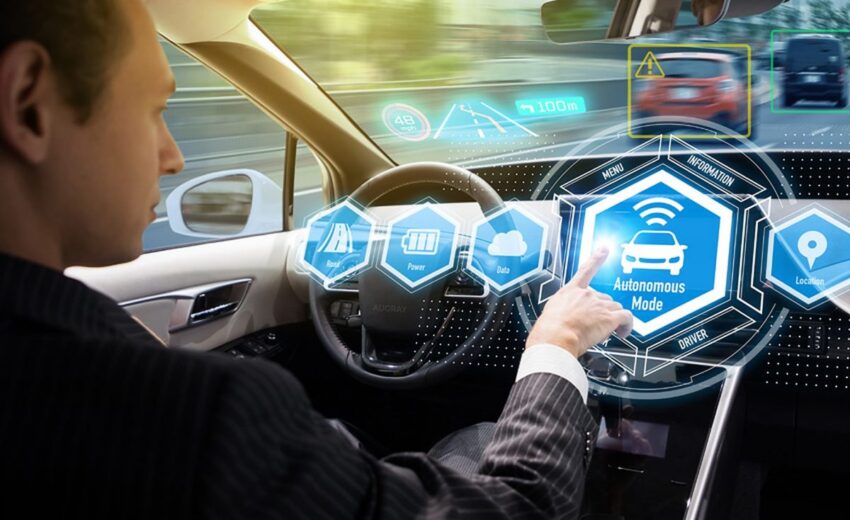
Last updated on April 7th, 2024 at 10:04 am
Augmented reality applications in the automobile industry are growing at a rapid speed, and this technology has gone far beyond the marketing gimmicks. Apart from the manufacturing backend and customers’ sales front end, AR is now enhancing the driving experience.
As security and road safety are on the verge of transformation, AR technology in automobiles is contributing its best to bring a whole paradigm shift. The car manufacturers are using augmented reality to integrate smart features that help drivers stay more attentive and focused. Be it simplifying the navigation cluster to improving drivers’ efficiency; the innovation is at its peak. On this note, let’s have a look at how AR tech is making driving smarter.
Creating more visibility
The most prominent use of augmented reality in the automotive industry for drivers is helping them with better visibility while driving. It frequently happens that drivers undergo obstructed visibility of surroundings, and it interrupts their driving attention.
With AR, drivers see the better surrounding images on their dashboard as AR superimposes the projection on real-time available view. This technology is crucial for big vehicles like pickup trucks as they can’t see the smaller vehicles coming right from behind. This perfect combination of camera footage integrated with AR projections is the future of advanced 360° viewing. The best part about this implementation is that the driver can adjust the viewing angles to make driving even safer.
Enhanced rearview mirrors
Visibility from the rearview mirrors is not very accurate, especially when driving at night. To cater to this issue, the augmented reality solution for the automobile industry is transforming the way we see those mirrors. With these AR-based rearview mirrors, drivers can see what’s coming from behind as the mirrors can fetch real-time information from the vehicle’s rear camera.
While driving at night, the superimposed projections on the rearview mirrors will double-benefit the vehicle drivers. First, they will be able to see the vehicles coming from behind, and also receive lane-changing alerts at the same time.
Lane Guidance
When driving at night, or in a foggy atmosphere, it becomes difficult for drivers to maintain the lane as the visibility is poor. Fog lamps of the vehicles are useful, but they also start losing the required efficiency after a certain point.
To help the drivers with better lane guidance, AR has a robust implementation which is simple and easy to understand. AR can display virtual guidance marks on the windshield with the front camera of the vehicle and lane sensors. If a driver has mistakenly shifted to another lane, these AR sensors can display warning messages to drivers.
This feature of augmented reality in the automobile industry will get more advancements as technology progresses. Several companies are dedicatedly working towards fixing issues like inefficient lane detention, vehicle blind spot, commercial EV charging stations, and more.
Speed limit sensors
This innovation of AR in the automobile industry is quite helpful for drivers who frequently need to travel from one city to another. Unlike traditional speedometers that can only display the current speed, these smart speed limit sensors notify drivers in real-time.
When a driver enters a new city or state, the speed limits rules may be different, and AR sensors can identify them. It’s possible by integrating Traffic-sign recognition (TSR) and augmented reality technologies. AR will display the needful information to drivers generated by the TSR technology whenever a new speed signboard arrives.
Better navigation
Several augmented reality apps for the Automobile industry are now available in the market, redefining the traditional navigation system. The current digital maps are information-centric, but they are not safety-oriented.
If a driver commutes in a new area, they need to continually monitor their navigation system on the screen to check routes. It will distract the driver’s focus from the road, and it might lead to an accident. To solve this issue and make driving smarter, vehicle manufacturers are now projecting the windshield directions and navigation.
Apart from better navigation, the driver can also check other relevant information related to the vehicle. Data including fuel status, distance information, outside weather and more is handy without taking eyes off from the road. We will see this kind of augmented reality for automobile services in more car segments in the upcoming time.
Future of augmented reality in automobile industry
All these advancements are the beginning of a more advanced driving ecosystem. The automobile augmented reality market value will be around USD 6.79 Billion in 2025, and the innovation will be massive. When more car and other utility vehicle manufacturers adopt this technology, people can get benefits and higher security. On this point, we can say, AR will bring a new digital transformation in the automotive industry. Along with driver-focused solutions, we will see more advancements for manufacturing units and automotive supply chain business.
Tech World Times (TWT), a global collective focusing on the latest tech news and trends in blockchain, Fintech, Development & Testing, AI and Startups. If you are looking for the guest post then contact at techworldtimes@gmail.com

